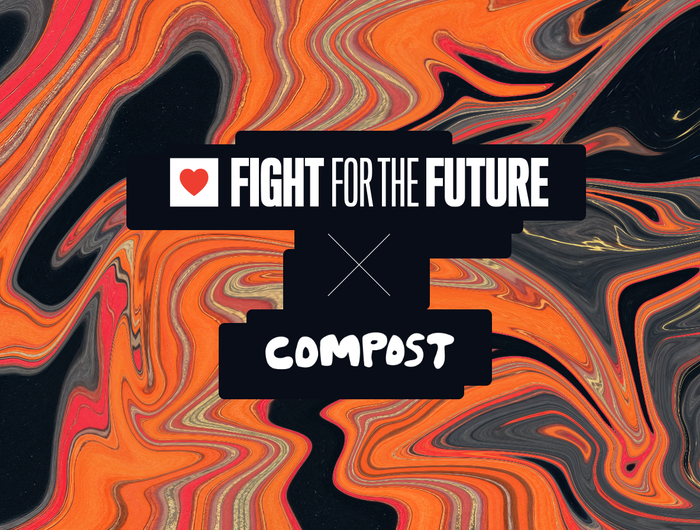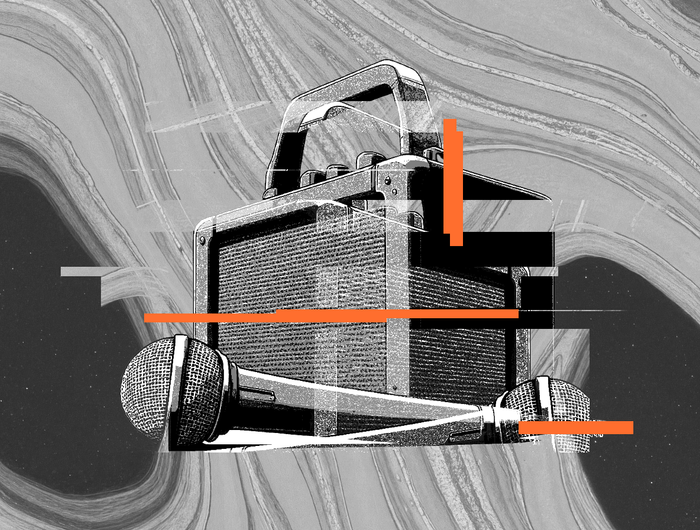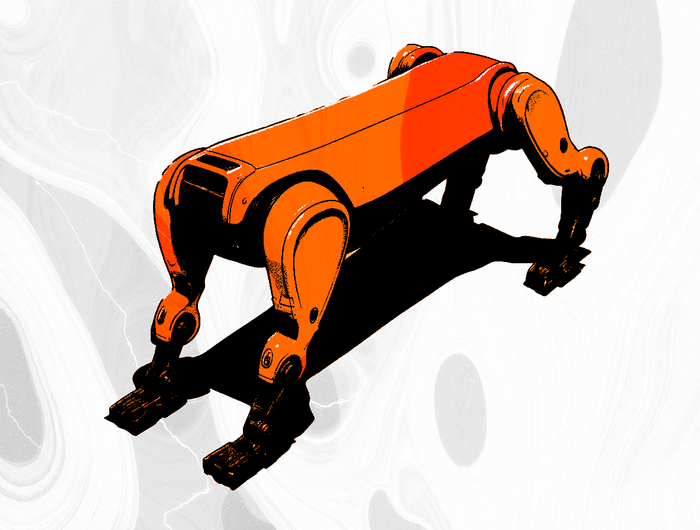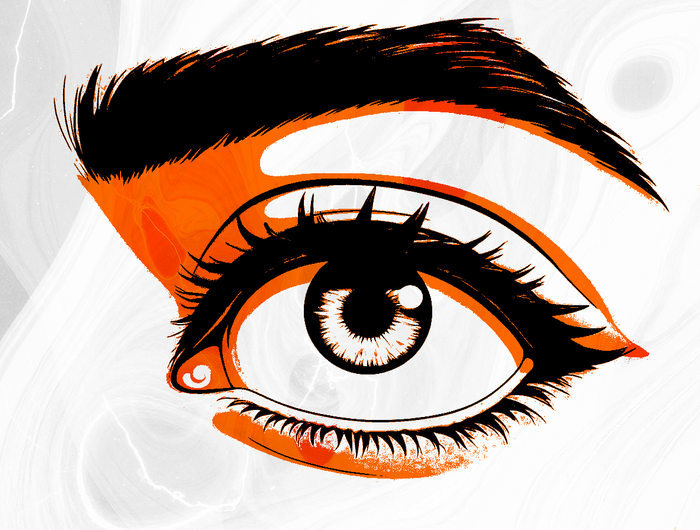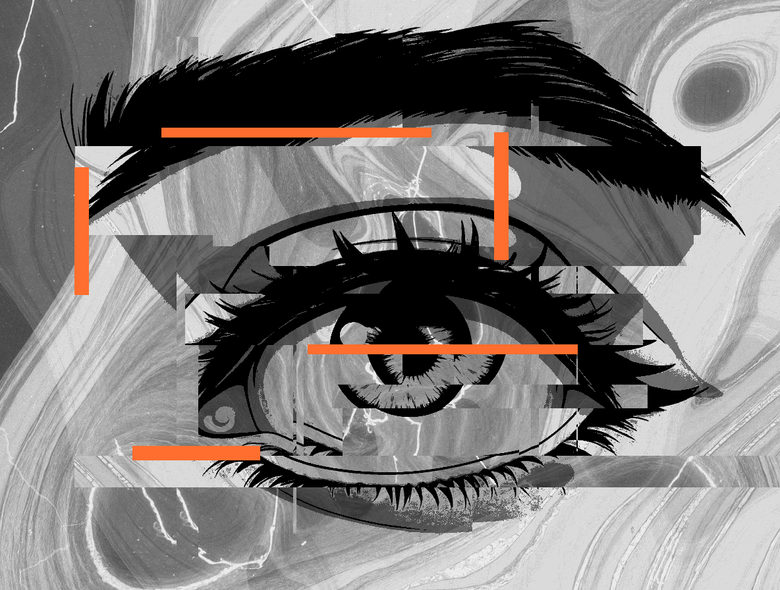
Perspectives: Crisis Actors
What follows is a synthesis of thoughts and discussion related to Crisis Actors by Corey Jae White and Maddison Stoff.
These largely come from a series of discussion sessions at RightsCon 2025 in Taipei, Taiwan. They are intended as fodder, inspiration, and incitement for creators to dig deeper on surveillance technologies and consider intersections in their own forthcoming works.

Tricksters, fools, and resistance
Messing with a system in a way that exposes its inherent brokenness is exactly what a trickster is supposed to do—making good trouble, yes, but also making morally grey trouble. Western storytelling seems like it’s struggled for a long time with the concept of the trickster figure. In modern western media this is often a character who does something disruptive, but not something that totally upends the system. The tricksters among the session participants wanted to be very clear that a real trickster is one who turns a system on its head!
Street theater used to be an act of resistance, and many of us want to bring it back. Mimes in latin culture were mentioned: they can't speak or be seen but they are recognized to understand something fundamental about life. This story also seems to draw from medieval plays and parts like the fool. But so often the world is so foolish that it is only a fool who can really recognize what’s going on. Or alternately—the fool is the only character who understands that they are in a play, who breaks the fourth wall, and who jokes about how ridiculous the play really is.
"What is the version of safety that is humor and joy and community?" - RightsCon Participant
One participant shared how even in the Gaza genocide in 2009, there were people whose participation in the resistance included bringing joy to the children. They mentioned that their father was one of those people and did clowning.
This story suggests a good exercise for those trying to find their role in the anti-surveillance movement or trying to tell unique or different stories of resistance: "what does a group of __________ people's resistance to surveillance tech look like?” Fill in the blank with a theater troupe, or witches, or bakers.
More:

Violence of resistance mirroring the violence of surveillance
"These systems of surveillance are actually killing people. Are we actually talking about the murder that's occurring?" - RightsCon Attendee
This is a story that grapples with the legitimacy of violence and invites the reader to do the same. Presenting acute violence in the story mirrors that these systems of surveillance are actively, truly violent. For example, the drones execute all the people in the basement of the bookshop—does the reader find that act more or less dire than the execution of the senator’s family? Why? We appreciated how White and Stoff worked in these questions and juxtapositions for the reader, to invite them to interrogate their own thoughts—what they gloss over as opposed to what they really see. It’s good to problematize the idea of what surveillance-fueled violence is, and whether it should be used. And by whom.
At RightsCon, the editors noticed an interesting discrepancy in the reception of the violence against the senator depending on who was weighing in. The activist community was more comfortable considering this story. The literary community was much less comfortable. We asked in one of our sessions about this:
“Political violence is on the table in countries like the US for the first time in a while.” - RightsCon Participant
"If we're not allowed to talk about it because of the fragile sensibilities of the publishing industry, that's a problem.” - RightsCon Participant
"If we can't allow the words of counterviolence to happen..." - RightsCon Participant
Stoff and White leave everything on a very mixed note re:political violence. It’s acceptable to have a critique of the violence, although the counterpoint made was this: this story is just talking about fictional violence against the state, it’s not about the real-world violence that's actually happening. If we can't even have words about violence, or discussion of resistance that employs it, then we need to zoom out farther and recognize how powerful such violence actually is in its ability to cause us to self-censor. It is necessary to talk about that power.
Every story in this toolkit has violence. Most, in fact, have murders. What makes this story different is the type of murders and the collateral damage. What makes it more challenging is the perceived innocence of some of the victims—and how the White and Stoff refuse to look away from it.
Is the reception of the violence different here because of who is doing the violence?

Pinkwashing
Just because Eve is a trans woman shooting up bookstores doesn’t make it okay. For some people, there needs to be a disambiguation when it comes to fascist repression—it can still be fascist repression if marginalized people are allowed to participate in it. Pinkwashing specifically is when a harmful practice uses the participation of LGBTQ+ people as a part of its propaganda apparatus.
“I like that this story is very relationship focused. There is family, there is dialogue, there is love, there is hate. There is art, there is surveillance…The story has two flows, one from the revolutionaries and one from the keepers. This is interesting because you get two perspectives of the same moment.” - RightsCon Participant
This surfaced a principle in Solutions Journalism, which is a curriculum on how to rigorously report on responses to problems and how communities respond. The principle is “complicating the narrative” — recognizing that simplicity on either side of an issue is problematic, and that it is important to give arcs to both sides. In this case, this shows both use and so-called misuse of a technology as a point of education.
The pinkwashing here is done particularly well because it does not fall into the common trope of queer-person-as-villain that is harmful. Instead, we’ve got queers fighting queers—complicity and resistance without identity boundaries. It can often actually be more realistic to have people who share the same marginalized identity not agree on hot-button issues, and to force the reader to deal with that complexity, as opposed to inaccurately presenting a marginalized group as a monolith.
Finally, it’s interesting that in so many stories on these themes, including this one, the cops are the bad guys and the good guys are always outcasts and weirdos, like in the Matrix. What if the good guys fighting surveillance were the majority? Were the normal ones? Where’s our Left Hand of Darkness for the human right to privacy?
More:
-
https://www.stereogum.com/2285655/evan-greer-pinkwashing-feat-downtown-boys-victoria-ruiz/music/
-
https://www.solutionsjournalism.org/program/complicating-the-narratives

“JK, but not really” does a lot of work off the page, too
“If you don’t see anything, you’re not looking hard enough” is a perfect encapsulation of surveillance’s incentive for its users to report. By design, the motivation behind these systems is to give impressive metrics and performance numbers to prove their own usefulness. Under capitalism, this means the first allegiance of these technologies is to their makers and the bottom line of their makers. The second allegiance will be to the purchaser, because the purchaser also has to show results to prove the worth of their investment. Incentives for surveillance technologies will always be misaligned when the ownership and control of these systems is centralized and for-profit.
White and Stoff could not make the motives of the system clearer than their depiction of bias in each color-coded button of the panopticon. In our discussions, the fact there was one button for each class of people prompted a grim laugh regarding the state of society. But the truth is that a person is never who they seem on the screen, and that the dehumanization of surveillance policing means that no employee of the panopticon will ever be hurting who they think they are hurting. A lot of an individual’s humanity is traded away when they become willfully complicit with harm, and this story was taken as a powerful allegory for extrajudicial drone strikes and AI programs like Israel’s Lavender.
It left us chewing on the inhuman challenge that content moderators face in being exposed to trauma as well—but we found these characters less sympathetic. Physical murder and incarceration, state sanctioned or otherwise, hits harder than digital censorship and erasure for most readers—although, the end result in terms of a person’s ability to participate in public life may be similar.
More:
-

AI in Israel's war on Gaza
Israel’s war on Gaza has revealed how mundane, unsophisticated AI surveillance systems are being used to unleash the most dystopian, tech-driven horrors on Palestinians. Israel's war on Gaza reveals how AI systems can unleash tech-driven horrors.
https://www.accessnow.org/publication/artificial-genocidal-intelligence-israel-gaza/ -
https://www.npr.org/2022/10/17/1129416671/chelsea-manning-wikileaks-memoir-readme

Anything can be hacked, no one is safe—and that’s a threat that cuts both ways
Who’s going to use the surveillance tech and for what? This story shows how the creators, users, legislators, and subjects of surveillance tech can never predict it. Technology is not neutral, it is an instrument of power. We might generally assume that the power of technology is for those who it is sold to — but its power is also available to any who can take it for themselves. Who the tech is given to matters. Who inherits it matters. Who co-opts it matters. Who “steals” it matters.
In seeing the surveillance tech being weaponized back in such a visceral way, the reader learns a truth about the digital world—everything can be hacked. A back door is never secure, not even for the government. No one is above these rules and realities. Yet so many popular storylines solve plot problems by giving their protagonist a magical piece of surveillance tech without ever showing the flipside—the shot up feminist book shop, the senator’s dead children.
Some aspects of this story did not seem like fiction at all. There are many problems that could be solved by today’s networked technologies, but often narratives about tech still present things that exist as futuristic. We need more narratives that show people hacking what’s around them and open people’s sense of possibility to the potential of today.
One example that was brought up was a project in a low-literacy community outside of Bangalore by an outfit called Janastu, where they built a system for people to record audio using a telephone booth and annotate it with clip art—no text required—challenging assumptions around literacy and access. Is this the future? Is it the past?
More:

Kitty’s definitely going to dance in this revolution
Characters can bring vivid life and hope to an otherwise very dark story. In this masterful balance of dark and playful, Stoff and White refuse to give darkness a defining power over how the reader feels. It’s a revolution where you can dance, use art and theater as resistance, and have fun with it. It answers: how can we upend the system and keep our humanity?
“For me a surveillance state is dehumanising. Because it is a show and they’re all actors, performing for an audience made up of cogs in the machinery of mass surveillance, this is a story about bringing the humanity back at its core.” - RightsCon Participant
There’s a place for art and theater and sex work and more in the revolution. There can never be enough reminders of this. Stopping surveillance tech and fighting copaganda is not just about hackers hacking and programmers programming. It’s about what the message is, how it is made to resonate, and generating enough cultural momentum to overthrow oppression — despite and because of the fact that the more perfect a machine becomes, the more distant it grows from the human experience.
Our inescapable humanity is a frailty and a strength: we will always be vulnerable because we want love and to love, and you can never code our desire for connection out of the panopticon. But you can use this beautiful flaw to bring it down.

Love that this story chooses…
-
TO NOT get stuck on the fact that this is definitely a story of elite resistance. It’s not something everyone can do or even be complicit in, but it’s still a community of people resisting quite effectively.
-
TO hang a flag on the fact that often it’s abusive people powering abusive systems. The toxic dynamic between Eve and Kitty is also really well done. Kitty feels gross because Eve is objectifying her as disaster porn, and December calls that out.
-
TO give characters a clear theory of change. They’re shaping a meta narrative in this story to undermine the legitimacy of the surveillance state itself and change public opinion. The war they’re fighting isn’t about the senator, really. It’s about making the surveillance state scarier to those in power than the prospect of dismantling the panopticon.


